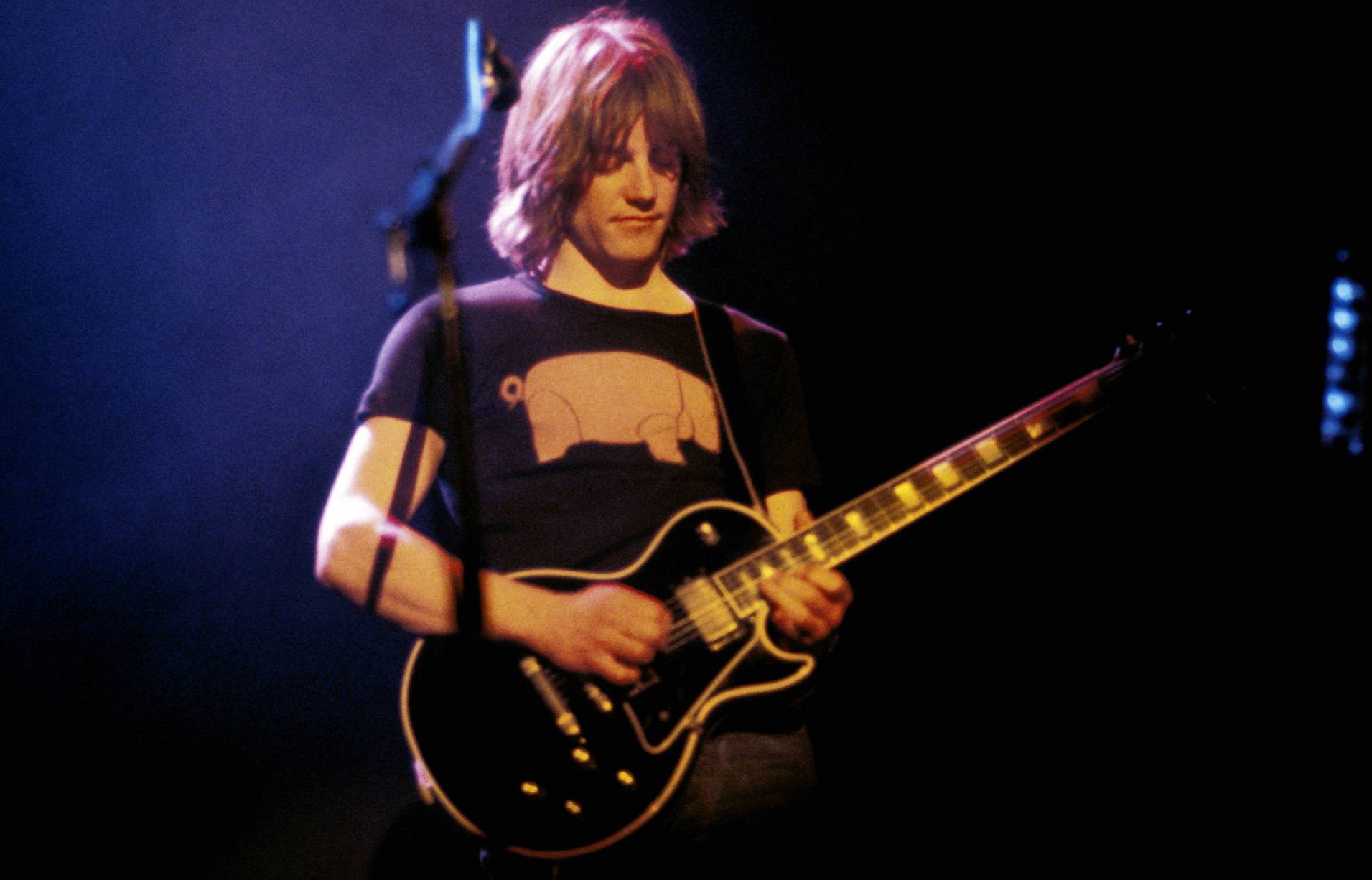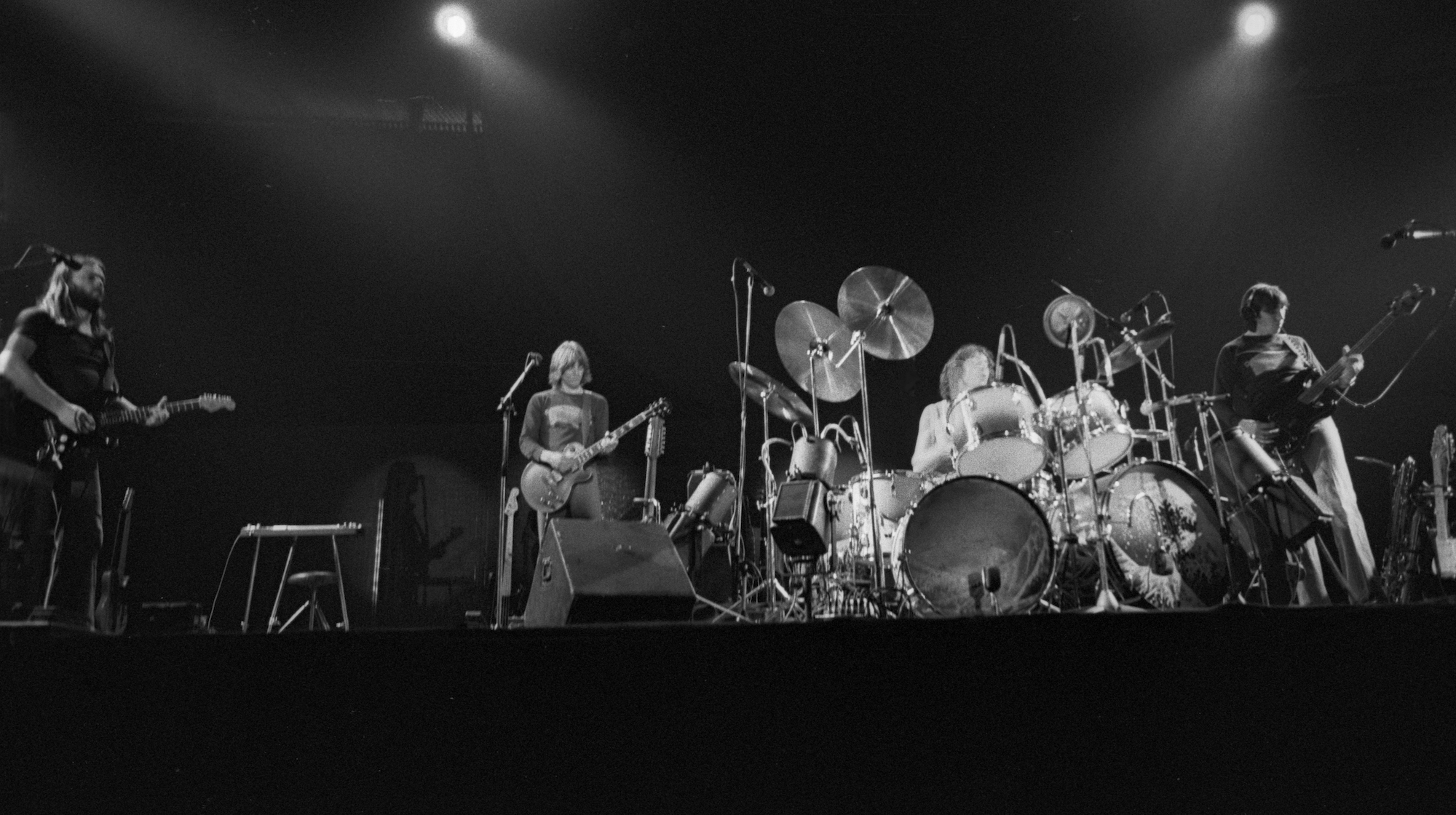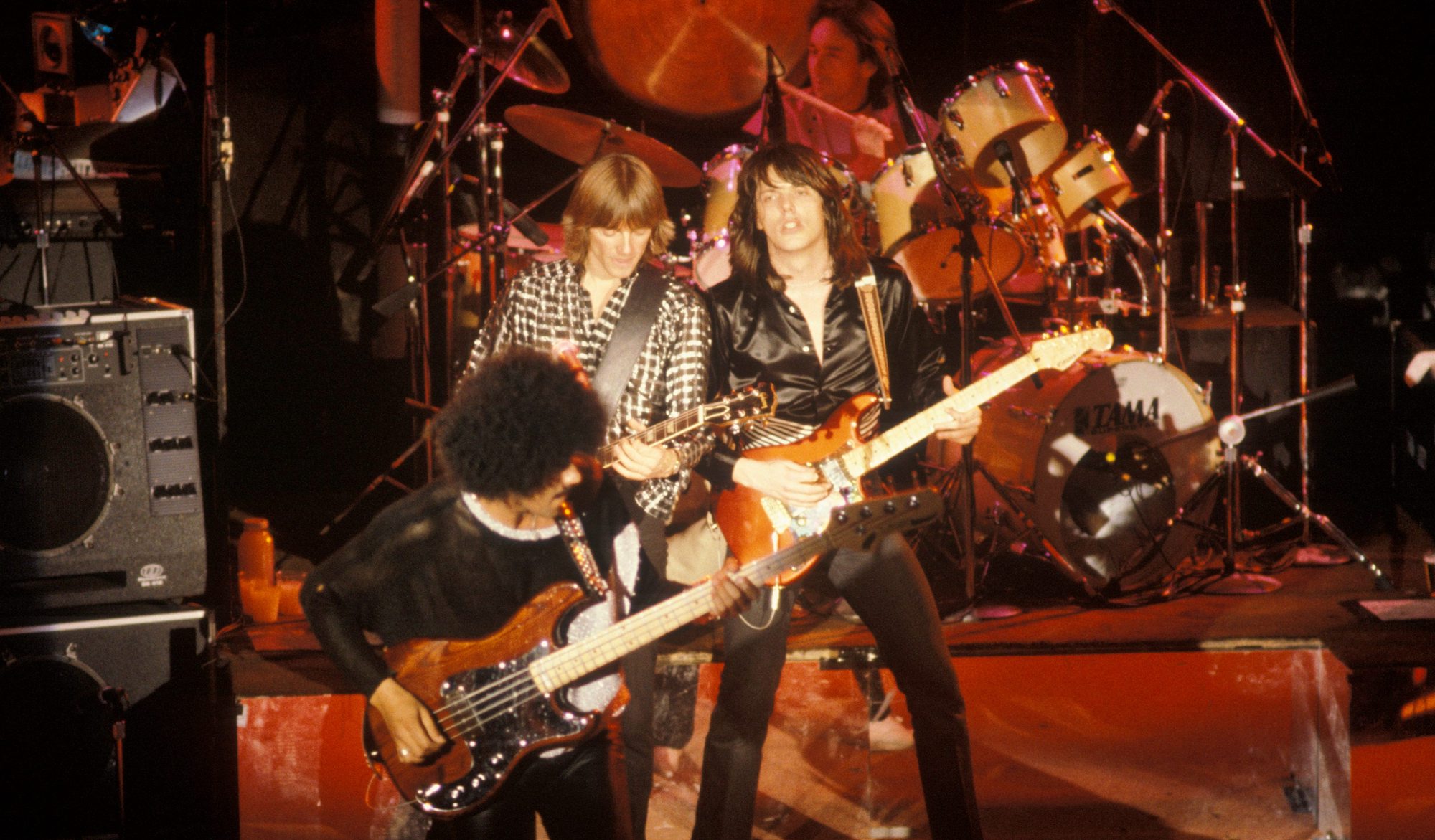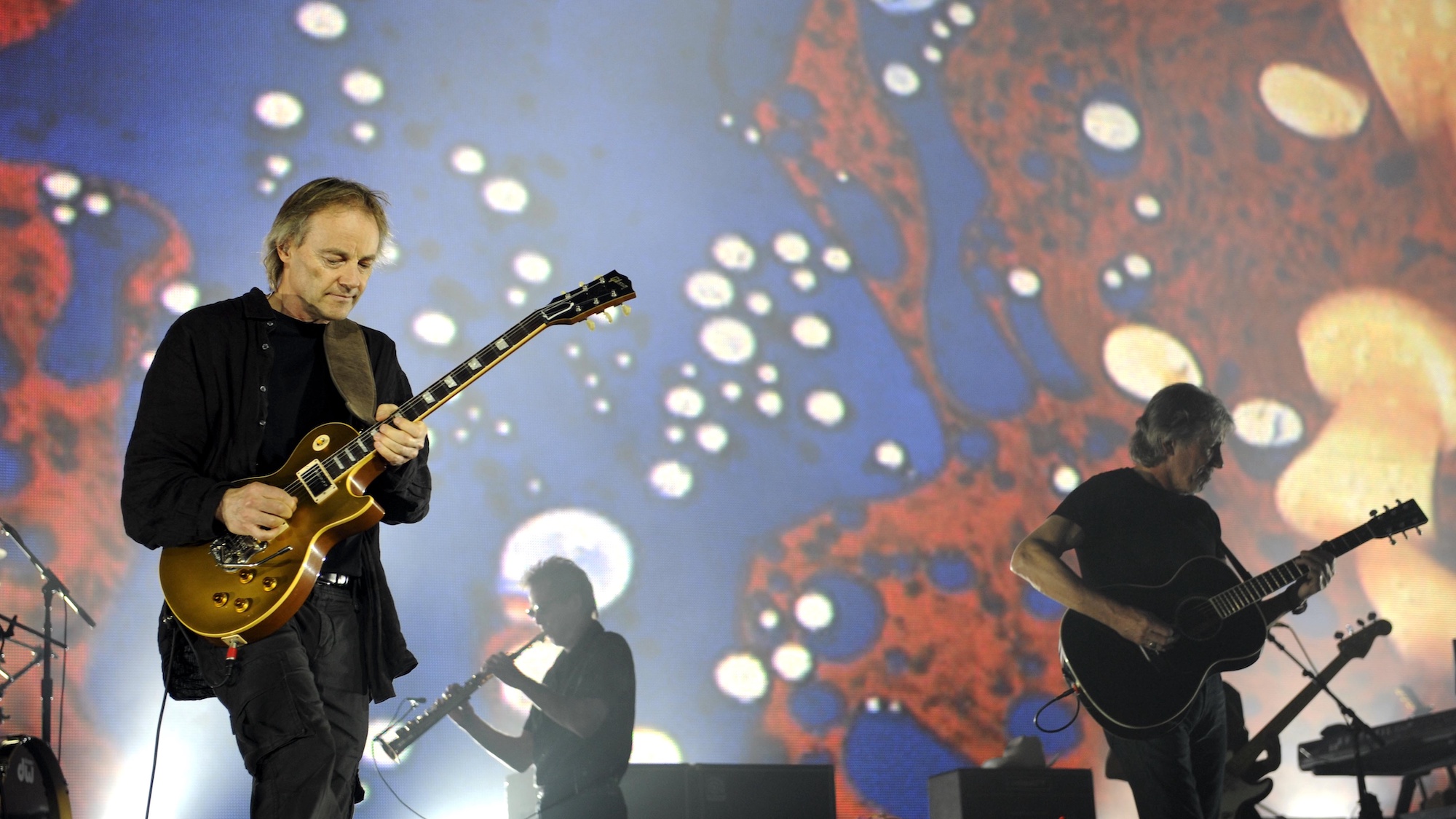Snowy White: "It's funny that I used a Strat for Pigs on the Wing. I was so used to my Les Paul – I was surprised I felt as comfortable as I did. I still hated it, but I got through it"
The rock guitar gun for hire reveals why he was initially hesitant to play with Pink Floyd, how he divvied up parts with David Gilmour, and what it was like navigating the tension between Gilmour and Roger Waters

Known for his warm tones and buttery-smooth licks, Terence Charles White, aka 'Snowy', quietly positioned himself as one of the more sought-after rock guitar guns for hire in the 1970s and '80s.
Though he's long been known for brandishing a vintage Gibson Les Paul Goldtop, for many, White's grandest moment came as an ancillary member of Pink Floyd's ranks during the recording of the band's 1977 album, Animals. As legend states, White wandered into Britannia Row one fateful day, and after securing a gig as a touring member, White – at the urging of Roger Waters – laid down a solo that would last a lifetime – in just one take.
“It was just after they offered me the gig that I recorded the solo for Pigs on the Wing," White recalls. "David [Gilmour] and I went back into the control room, and he said to Roger [Waters], 'Snowy has agreed to take the gig,' and Roger said, 'Well, while you're here, you might as well play something.'”
“So, Roger swivels around and puts on Pigs on the Wing," White continues. "And then he said, 'Why don't you do a solo in the middle? Go ahead and pick up any of those guitars out there and have a go at it.' So, I picked up this white Strat, plugged it in, fiddled about, and then did the solo in one take. I know one take sounds impressive, but honestly, I got lucky that I did such a nice one right away.”
Ironically, the entire reason that White devoted himself to his Les Paul in the first place was a rather intense disdain for Fender Stratocasters. And while White's Goldtop-slinging ways might have garnered him attention from the boys in Floyd, on that fateful date in the studio, it was a Strat that White used to work his magic.
“I know, I know… it's funny that I used a Strat for Pigs on the Wing," White laughs. "I was so used to my Les Paul by that point, and I was surprised that I felt as comfortable as I did with that Strat. I still hated it, but I got through it [laughs]. Even though I was using a Strat, I still think that solo turned out quite nice.”
“What's funny, though, is I remember reading someone comment on that,” White recalls. “I remember it clear as day – they said, 'What's this? Snowy White doesn't play Strats; this can't be Snowy White.' And I just thought, 'You know, I'm allowed to pick up another guitar and play it, too.' But I'm known as the Les Paul man, so what can I say?”
Get The Pick Newsletter
All the latest guitar news, interviews, lessons, reviews, deals and more, direct to your inbox!
Now retired from touring, and in-between sessions for his next record, White dialed in with Guitar World to recount his long journey from a Strat-wilding kid from Barnstaple to sharing the stage with Pink Floyd, Thin Lizzy, and beyond.
What first inspired you to pick up the guitar?
“When I was 10 or 11 years old, I wasn't a very outgoing sort of boy, meaning I was a bit shy. I often kept to myself, but one day I walked past a classroom with this handsome lad – unlike me – sitting at a table playing the guitar. He was surrounded by girls, and I thought, 'Right… I'd like to learn to play the guitar.' Truth be told, I'd been interested in it before, but the idea of girls and increased popularity is what spurred me on to finally pursue it full-on.”
Moving forward, when did you obtain your trusty Gibson Les Paul Goldtop?
“I came upon the Goldtop while I was in Sweden with my first band, Train. I'd moved there when I was just 17, and at the time, I'd been playing a Strat that my parents had given me when I was 10. Anyway, we were rehearsing, and the drummer in Train knew that I'd been yearning for a Les Paul and that I didn't like the Strat.
“So, he said, 'Listen, I've got a friend who has had this Les Paul under his bed for ages, and he's thinking of selling it. Shall I put you in touch?' I was quite excited to hear this, and I said, 'Go on then, let's have a look.' So, I did, and this guy pulled the guitar out from under his bed, and as fate would have it, there was my Les Paul.”

What was it about the Les Paul that drew you in?
“Now, I have to say, I don't really know anything about guitars [laughs]. All I knew then is what I know now – I wanted a Les Paul. I loved how they looked and thought they sounded much better than my Strat. When I picked it up, as I suspected, it sounded alright, so I swapped him my Strat and £120 for the Les Paul.
“I think I borrowed some money from my dad when I was last in England, and my Swedish girlfriend put some money towards it, too. I was lucky because it turned out to be a fantastic guitar. Of course, I didn't know that at the time… for all I knew, it could have been rubbish [laughs].”
What was it about the Strat that you didn't like?
“Everything. I didn't like the weight of it. I didn't like the sound – I couldn't get the sounds I wanted out of it. Plus, I felt it felt it was a bit flimsy. I started hitting my guitar pretty hard, and I didn't think the Strat could handle it. I also liked that warm Les Paul sound, which is the main reason I wanted the thing. So, it was an easy decision for all those reasons.”
How did the Les Paul shape your sound as you moved forward?
“That's hard to say, because all I did was fiddle with the amplifier until I got a sound I liked. But I knew that Peter Green had his pickups installed incorrectly, giving him a special sound. I liked that, but Pete's guitar was sort of permanently like that, and I didn't want that all the time, so I added a switch on mine that would put it out of phase. So, I had a whole range of nice, subtle changes of time to play with.
“The sounds I was after were warm and not too distorted. I wanted that nice, warm tone, but it had to be fairly clean. I also wanted it to stay in the middle range, with just a touch of reverb to sweeten it up as I wanted. I guess I was always searching for what I'll call a 'sweet tone,' which is not always so obvious or easy to describe. It's a sound with just the right amount of treble and reverb, and not very distorted at all.”
What was the earliest recording that you recall using the Goldtop on?
“Oh, that's a good question. Nobody's ever asked me that before. I did a session for a singer called Linda Lewis; the girlfriend of a friend called Jim Cregan. She was doing a recording and asked me if I would come in and play on a few things.
“Not too long after I arrived in Sweden, it became apparent that I needed to be in London if I wanted to do anything. So, I went to London, and soon after that – in 1969 – I met Jim and his girlfriend, Linda Lewis. And several years later, Linda was recording her album, Not a Little Girl Anymore – that was the first session I used the Goldtop on.”
How did you become involved with Pink Floyd later in the '70s?
“I got a call from someone who said Pink Floyd was looking for an augmenting guitar player for their live work and that they were given my name. I was told that the guys in Floyd had been trying to call me and that I should get in touch. I had ignored the calls at first because, at the time, I was a fairly narrow-minded blues player, and I didn't know anything about Pink Floyd and didn't care much to find out.
“Honestly, I thought they were drug-crazed hippies [laughs]. They had been messing about with all this funny stuff, and none of it was the sort of thing I was interested in. So, I didn't call them. But somebody else mentioned it to me again and said, 'Snowy, why don't you call them? This would be a good gig for you.' So, I thought about it, and I did.
“I went and contacted their manager [Steve O'Rourke], and he said, 'Can you come down to the studio, see the guys, hear what they're recording, and get a feel for what it's all about?' I thought about it again and said, 'Okay, I'll come down and see about it.'”

Can you describe the scene once you arrived at the studio?
“It was quite casual, really. Roger and David were hanging out in the control room. Roger said to Dave, 'Why don't you take Snowy into the office and tell him what the gig's about?'
“Next thing I know, I'm sitting across from Dave, who says, 'Right, okay. So, we'll need you to play a bit of 12-string, some rhythm, some lead, a bit of harmony, and some bass – you can play bass, can't you?' I said, 'Well, yeah…' and he said, 'Great. So, what do you think? Do you want the gig?' I said, 'Yeah, okay, but – don't you want to hear me play?'
“The truth was that I didn't know their music. I really didn't. And I always loathed doing that sort of thing because I'm useless at learning other people's songs - I'm not a session guy. I don't know where that came from – because, again, I'm a narrow-minded blues guy. So, I said, 'Well, maybe we should have a jam, so you can hear me play?' And he said, 'Well, you wouldn't be here if you couldn't play, would you?' I said, 'Well, no.' He said, 'Right. You've got the job,' and that was it. That's how I got the gig with Pink Floyd.”
Once on tour with Floyd, how did the division of guitar-related labor between you and David shake out?
“Again, it was very casual. Before we got on the road, they sent me all the albums, and I sat at home and listened to them, with a particular focus on the tracks they wanted me to play live. The first record I put on was Wish You Were Here, and I found that to be quite nice, with some lovely guitar playing. So, that eased things up for a bit and made me feel like, 'This is something I can handle, and maybe I can even add something here.'
“When we got to rehearsals, I roughly knew what I wanted to do and what was expected of me on each track. It was as Dave said – some bass, some acoustic, some rhythm, some harmony, and even some lead. I must say that Dave was very generous with the leads and gave me chances to shine. He had a great feel for the songs, and he'd queue me in when he wanted me to take the lead or if he wanted me to hang back.”

The interrelations within Floyd in the late '70s are said to have been quite interesting. What were your observations between Roger and David during your time with them?
“Interesting… that's one way to describe it. I think it's a lot like living in China – it all depends on where you are – but it was an interesting time. Things would be going on all the time, but I am the sort of guy who lets things go in one ear and out the other. I was learning my songs, playing my parts, and doing my best, so I had my hands full. But there was stuff going on, and it wasn't very good.
“I could hear the arguments between Roger and Dave occasionally, but I did my best to drown that out and focus on doing my thing. It wasn't any concern of mine. But I could tell things weren't going smoothly, and they weren't getting on well.”
Considering you toured with Roger later, would you say you ultimately became closer to Roger than the rest of the band?
“Well, yeah, I worked with Roger a lot more. We did 13 years of touring, which went on almost every year for months. So yeah, I guess so. Then again, I didn't ever really get close too close with any of them. And I think that was because I felt that I didn't need to do that. Instead, I did my thing, did my best, and enjoyed it.
“For me, it was fine, but I didn't get involved on a social level with Roger, particularly. We'd email and occasionally talk, but we're not on the same wavelength overall. We had musical chemistry rather than a personal one, I think.”
How did you become involved with Thin Lizzy?
“Well, that was another thing that I drifted into. I was rehearsing in London with Cliff Richard, and I bumped into Scott Gorham. He said, 'I saw you playing with Pink Floyd at Madison Square Garden; what a great concert. We're actually trying out guitar players next door, do you want to come and have a go?' And I said, 'Well, I can't; I'm working with Cliff Richard right now, sorry.'
“But a few days later, Scott found me and said, 'We still haven't found anybody. Do you want to come along and have a go?' So, I did, and we played a bit, and then Phil [Lynott] said to the band, 'Shall we let Snowy into the band?' And they said, 'Yeah, let's have him.' But looking back, I don't think I was the right person for that band. I did add some things, but it never felt right.”

Why do you feel you weren't a fit?
“Musically, we did some great things, but our mindsets were not aligned. I was quite surprised at how much time was wasted. I wasn't used to that sort of rock and roll thing where it's, 'Oh, we don't really care about wasting money and not being on time.' It certainly took me a while to get used to that, because when I'm booked in the studio at a certain time, I'm there.
“I tried to get used to it, and I did alright. It wasn't bad, but it wasn't for me. I put everything into it that I could, but I didn't fit in socially. I was the only former member not in attendance at Thin Lizzy's famed final concert, which shows how well we got on socially [laughs].”
My understanding is that you've parted ways with your beloved Goldtop. What led to that?
“Yes, I'm afraid that's true. I had a lot of problems with my elbow and my shoulder, and the Goldtop was wasting away in the cupboard under a pile of clothes in my bedroom. I don't know what came over me, but I just wanted to move on from it for some reason. I felt it was holding me back, although I had it for about 45 years or more.
“That Goldtop was my only guitar for a long time, and I loved it. It sounded great, but I had started thinking about selling it. So, I contacted Heritage Auctions in America, and they put it in their Beverly Hills auction, and it went overseas. From there, it took on a life of its own, so I let it go.”
Do you have any regrets about doing so?
“I regret it occasionally, and I'll tell you why: I haven't found another Les Paul that sounds anything like it. And that's quite frustrating, but I don't do live shows anymore, and I've got other guitars that can do the job in the studio. It would be a problem if I were still playing live, but I haven't done a live show since June 7, 2019.
“Occasionally, I get a twinge and miss it, but I was pleased I'd sold it then, and I understand that it went to a good home. I wish I hadn't – but I'm glad I did, if that makes sense. Even if it doesn't, it makes sense to me.”
You're using PRS guitars for the most part now, right?
“Well, yes, but I've been using them to some extent since I started touring with Roger in '99. Roger asking prompted me to use PRS in the first place. He called and said, 'We're starting to rehearse; I need you in the Hamptons next week.' So, I had to go overseas for this tour, but I didn't want to have to carry my Les Paul.
“So, Paul Reed Smith loaned me a couple of guitars to play over there, and he let me keep them. I found that I liked them as they were very light and lovely guitars. No, they're not the same as a Les Paul, but I added some humbuckers and a few bits to get some authentic sounds when needed. So, after I sold the Goldtop, I did start using my PRS guitars more as they're easier on my body, and I was used to them to some extent.”

How do you stay inspired to create new sounds?
“I must say, it's a little bit frustrating sometimes; there are days when I'll only play for maybe five or 10 minutes because my fingers don't do what my brain tells them to do anymore. But I suppose my attitude is that I've got nothing to prove to others or myself at this point.
“So, I just do some tasty little bits until I don't feel like doing it anymore. The problem is, when you've been playing for as long as I have, it's difficult not to think that you've done it all and that you're somehow repeating yourself. So, I'll occasionally try and change things to do something different, but I'll usually mess around with the controls and hope that what comes back at me sounds good.”
Andrew Daly is an iced-coffee-addicted, oddball Telecaster-playing, alfredo pasta-loving journalist from Long Island, NY, who, in addition to being a contributing writer for Guitar World, scribes for Bass Player, Guitar Player, Guitarist, and MusicRadar. Andrew has interviewed favorites like Ace Frehley, Johnny Marr, Vito Bratta, Bruce Kulick, Joe Perry, Brad Whitford, Tom Morello, Rich Robinson, and Paul Stanley, while his all-time favorite (rhythm player), Keith Richards, continues to elude him.
“His songs are timeless, you can’t tell if they were written in the 1400s or now”: Michael Hurley, guitarist and singer/songwriter known as the ‘Godfather of freak folk,’ dies at 83
“The future is pretty bright”: Norman's Rare Guitars has unearthed another future blues great – and the 15-year-old guitar star has already jammed with Michael Lemmo











